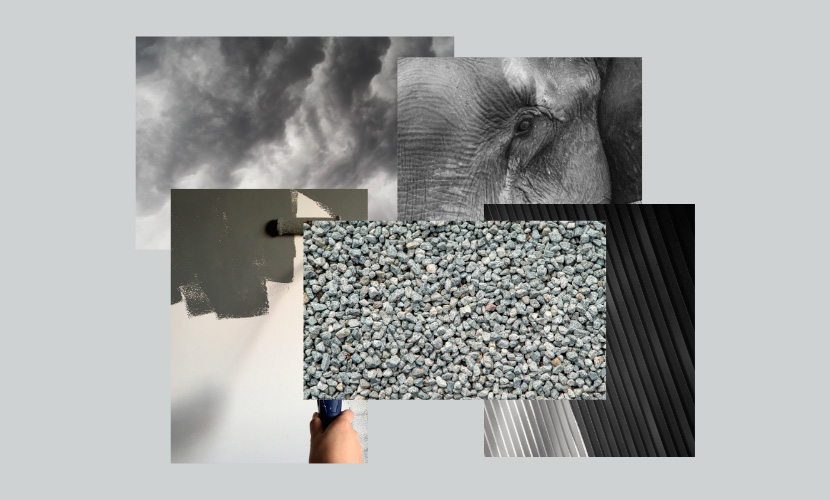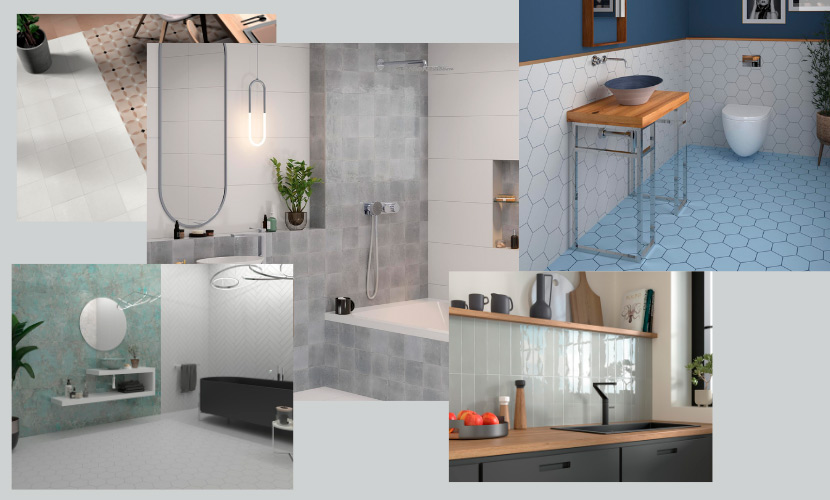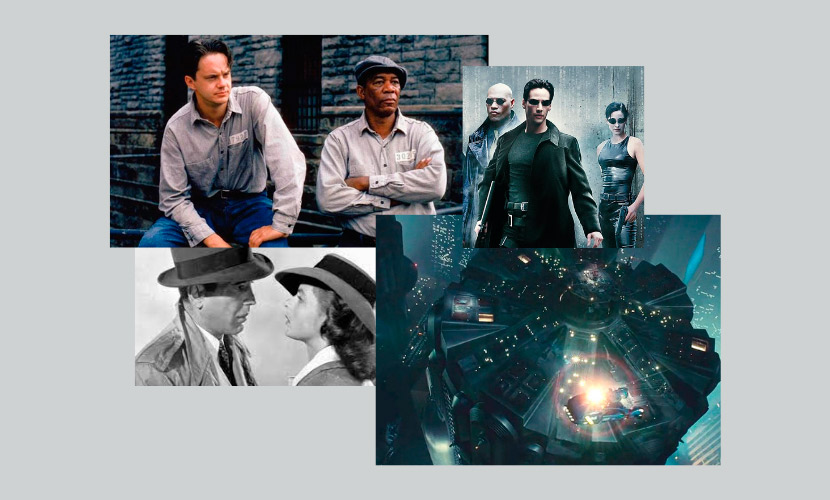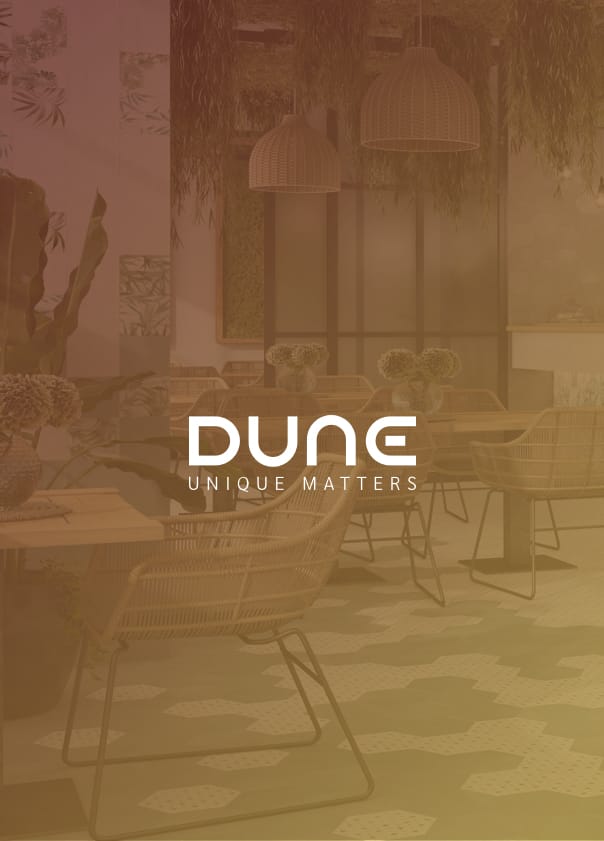Decoration in grey: versatility, elegance and sophistication
Gray is one of the most enigmatic and versatile shades in the color spectrum. Often overlooked due to its apparent lack of vibrancy, gray decoration has a high adaptability to a wide range of styles and environments depending on what it is combined with. From livelier and vibrant spaces where gray joins powerful colors to more relaxed, calm, and sophisticated spaces in its combination with the timeless black and white.
Gray decoration has become an increasingly popular trend in the interior design sector. As leaders in the ceramic industry, at Dune, we are committed to offering our customers the latest trends in decoration and design, which is why the color gray had to be present. In this article, we will explore the elegant and captivating world of this color, from its meaning to its application in architecture, film, art, and, of course, interior decoration.
The meaning of the color gray
Before delving into the specific applications of the color gray, it is essential to understand its meaning and how it impacts our perception and mood. In this regard, gray is, by nature, a neutral color. Neither entirely white nor entirely black, it symbolizes a middle ground, making it a symbol of balance, neutrality, and stability.
On the other hand, in fashion and decoration, gray is commonly associated with sophistication and elegance. A well-tailored gray suit or a living room in gray tones can convey a sense of class and timeless style. Gray is also related to seriousness and formality. It is the color of choice for attire in professional settings and is used in logos and corporate stationery to denote professionalism.
In color psychology, gray is often associated with calm and composure. It can induce feelings of tranquility and reflection. However, on the opposite side, an excess of gray in an environment can be monotonous or even depressing.

The color gray in interior decoration
Next, we will explore the elegant and captivating world of the color gray in interior decoration, revealing how this neutral shade becomes a blank canvas full of creative possibilities. From minimalism to classicism, gray adapts to a wide range of decorative styles, adding a touch of elegance, balance, and seriousness to our spaces. Gray has become a timeless trend in modern decoration, offering a perfect canvas for the expression of your personal style.
Gray decoration is an excellent choice for creating a balanced and harmonious environment. Gray is a neutral color that can be paired with a variety of colors and styles to create a variety of atmospheres. For example, it can be combined with vibrant colors like yellow or red to add a touch of contrast, or with soft tones like beige or white to create a relaxed and tranquil ambiance.
Ver esta publicación en Instagram
What decorative styles use gray?
- Minimalist Style. Gray fits perfectly with the minimalist style, which focuses on simplicity and functionality. Soft gray tones and clean lines create a serene and organized atmosphere in minimalist spaces.
- Industrial Style. Industrial aesthetics often incorporate gray as part of their color palette. Gray tones are combined with materials like steel, concrete, and glass to create a modern and urban look.
- Nordic Style. Nordic style is characterized by its focus on natural light and soft colors. Light gray tones are used on walls and furniture to create a cozy and tranquil environment.
- Classic Style. In classic decoration, gray is used in combination with warm colors like gold and cream. This adds a dose of elegance and sophistication to the interiors.
- Scandinavian Style. Similar to Nordic style, Scandinavian style uses gray as part of its palette of fresh and neutral colors. Accents in darker gray tones can add contrast and character.

In interior decoration, gray can be used in many ways. For example, through the use of paint on walls. It can be used on a single wall to add a touch of contrast, or on all walls to create a relaxed and tranquil atmosphere. Additionally, gray is also an excellent color to use on ceilings and moldings.
In addition to using gray on walls and floors, it can also be used on furniture and accessories. Furniture in gray tones, such as sofas and chairs, is an excellent choice to add a touch of elegance to the decor of any style.
But undoubtedly, one of the best ways to use gray in interior decoration, and one in which Dune is an expert, is through the use of ceramics. Ceramic tiles and floors are an excellent choice to add a touch of gray to your decor. We will now take a closer look at this option.
Gray tiles: from simplicity to marble elegance
As we've mentioned, at Dune, we offer a wide range of gray tiles, from soft pearl gray tones to dark anthracite gray tones, ideal for use in minimalist, contemporary, industrial, and Scandinavian-style projects.
Let's start with Pietrasanta, one of our latest collections, inspired by the gray stone of Cardoso. Pietrasanta tiles reflect the beauty of this charming town in Tuscany, the historical capital of Versilia. From its quarry, located at the foot of the Apuan Alps, a very intense gray stone with unique and unrepeatable nuances is extracted. These characteristics are also reflected in our series.

To add that touch of elegance to any space, whether it's in the kitchen or the bathroom, we have an extensive collection of small pieces designed and created to provide that touch of color (in this case, gray). Gray tiles from the Altea, Flat, Exa, Agadir or Gaudi series play a fundamental role in the creation of aesthetic and functional environments.

We also offer gray tiles in much darker shades like anthracite or graphite gray, which can add strength and personality to any space. Atelier Graphite and Gaudi Marengo are clear examples.

In another style of gray tiles, we also have a wide variety of marble-imitating gray tiles to create elegant and sophisticated environments. The Selene series explores different shades of gray, from lighter to darker, to offer a wide range of products for creating striking and very elegant interiors.

Another option that we offer at Dune for gray decoration comes from the various available collections of stone and cement. Karakter, Magnet, Emporio, or Fancy provide a wide range of options to add that gray touch to the decoration of any interior design project.

Finally, we would also like to highlight the gray decoration options provided by mosaics. They are the perfect complement to add a touch of color to any space without overloading the decoration with just one color. At Dune, we have a wide variety of mosaics in gray tones. Here are some examples to complement the decoration and add a more elegant and sophisticated look to the decor: Charm, Duende Metal or Zoe.

The color gray in architecture
Architecture, like interior decoration, has embarked on an exciting chromatic journey in which the color gray has acquired a prominent role. From steel and glass skyscrapers to residential and commercial buildings, the use of gray in architecture has redefined urban aesthetics and captured the imagination of architects and designers around the world.
Gray in architecture is not merely a default choice but a statement of style and modernity. This versatile color has become a canvas upon which a variety of intentions and emotions can be projected. Here, we explore some of the highlights of using gray in contemporary architecture:
- Sophistication and elegance. When used in architecture, whether on facades, cladding, or structural elements, it brings an air of distinction and timelessness to the building. The combination of gray tones with materials like stainless steel, glass, and concrete can create a modern and refined appearance.
- Neutrality and compatibility. Gray is a neutral color that complements a wide range of other colors. This makes it a strategic choice for architects, allowing them to design buildings that harmoniously integrate into their urban or natural surroundings. Gray adapts equally well to bustling urban landscapes and serene rural environments.
- Play of textures. Gray architecture often features the incorporation of various textures. Rough concrete surfaces, polished steel, and reflective glass come together to create visual contrasts that add depth and character to the buildings.
- Creative expression. Despite its neutral appearance, gray does not limit the creativity of architects. In fact, it provides them with the freedom to experiment with shapes and patterns, as gray serves as a perfect backdrop for vibrant color accents or striking architectural elements.
From modern skyscrapers to historic monuments, gray has proven to be a faithful companion to contemporary architecture, creating buildings that are both witnesses of their time and timeless masterpieces of design and elegance. Below, we analyze some of the most iconic gray buildings.
- The Guggenheim Museum, Bilbao, Spain. The Guggenheim Museum, designed by Frank Gehry, is an iconic example of gray architecture. Its façade is covered in gray titanium panels that appear to flow like liquids, creating a stunning visual impression.
- Empire State Building, New York, USA. The Empire State Building is another emblem of gray architecture. Its gray limestone façade is a display of classic elegance in the midst of New York's urban landscape.
- The Pompidou Center, Paris, France. This bold and modern building, designed by Renzo Piano and Richard Rogers, features a gray-painted steel structure that stands in stark contrast to the surrounding architecture of Paris.
- The Sydney Opera House, Australia. While known for its distinctive shell roof, the Sydney Opera House also incorporates gray into its design. The gray terracotta tiles on its façade complement its harbor-side surroundings.
- The Getty Center, Los Angeles, USA. The Getty Center, designed by Richard Meier, is characterized by its predominantly gray and white color palette. The choice of gray emphasizes the simplicity and elegance of its design.

Gray color in fashion and on the runways
Fashion, in its constant pursuit of innovation and personal expression, has found an unwavering ally in the color gray. Over the decades, this neutral shade has taken center stage on runways around the world, showcasing its versatility and ability to adapt to a wide variety of styles and trends.
Gray has been a recurring color in fashion since ancient times. Its history dates back to elegant Roman togas and the attire of European nobility during the Middle Ages. Gray was associated with solemnity and seriousness, as well as elegance and distinction.
As fashion evolved, gray began to play a more prominent role. In the 18th century, it became popular as the color of choice for men's suits and later as part of women's attire. During the 1920s, Coco Chanel revolutionized fashion by introducing the "Little Black Dress" but also contributed to the popularization of the "Chanel Suit," a two-piece outfit in shades of gray.
In haute couture, gray has found a special place. The world's most influential designers have used this shade to create collections that have left an indelible mark on the fashion industry. Below, we detail some of the most prominent:
- Jil Sander. Embraced minimalism in her creations, using gray to create clean lines and simple silhouettes.
- Alexander Wang. Has incorporated this color into his collections. Additionally, sustainability has led to a renewed interest in natural gray tones and eco-dyed grays.
- Giorgio Armani. Gray has become a cornerstone of his brand. Armani uses gray in a variety of garments, from men's suits to evening gowns for women. His focus on clean lines and sophisticated silhouettes has made gray a central element in his color palette, conveying subtle yet powerful elegance.
- Christian Dior. Dior's "Bar Suit," introduced in the 1940s, often featured shades of gray, highlighting the elegance and precision of the cut. Gray has also been seen in Dior's cocktail and evening dresses, often incorporating gray details and embellishments to create a sophisticated look.
- Vera Wang. Known for her bridal designs, she has incorporated gray in surprising ways in her bridal dress collections. The use of pale or pearl gray tones in her dresses has added a unique dimension to the bridal aesthetic. The choice of gray for wedding dresses has demonstrated that this color can be equally romantic and elegant.
Gray in fashion is not limited to the runways alone. It has left an indelible mark on pop culture, influencing how we dress and perceive fashion in everyday life. Iconic gray suits worn by James Bond, Audrey Hepburn's timeless style in "Breakfast at Tiffany's," or the use of gray in contemporary street fashion all demonstrate that this color is an essential element in shaping personal identity and image.

The use of gray color in painting
The use of gray color in painting is a practice that has left a profound mark on the history of art. Although gray is often associated with neutrality and sobriety, its application in painting has proven to be a powerful tool for conveying a wide range of emotions, atmospheres, and visual concepts. Here, we will explore the various ways in which artists have used the color gray in their works throughout time.
- Gray color in classical painting. Gray was used as an essential component to achieve the chiaroscuro effect and create depth in works of art. Renaissance masters like Leonardo da Vinci and Caravaggio were experts in using gray to model forms and give volume to their figures. This approach to shadows and light allowed paintings to acquire a three-dimensional and realistic appearance.
- Expressionism and abstraction. The 20th century brought artistic movements that experimented with gray color in more expressive and abstract ways. For example, artists like Mark Rothko, known for his abstract color field painting, often used gray and neutral tones to create emotionally profound works. Gray became a color that could convey melancholy, introspection, and ambiguity.
- Symbolism and surrealism. In symbolism and surrealism, gray became a symbolic color. Artists like René Magritte and Salvador Dalí used gray to create dreamlike and unsettling atmospheres in their works. The use of gray allowed for visual ambiguity that challenged logic and reality.
- Contemporary art. Contemporary art has continued to use gray in innovative and eclectic ways. Artists like Gerhard Richter have created works where gray plays a fundamental role. Gray is used to represent the ambiguity of memory and history in his paintings.
The use of gray color in painting is a manifestation of the richness and versatility of this shade. Throughout the history of art, artists have used gray to achieve a wide range of visual and emotional effects, from realistic representation to abstract and symbolic expression. Gray in painting is a reminder that an apparently neutral and modest color can be a powerful tool for artistic expression and visual communication.

The color gray in film and photography
In film and photography, the color gray is essential for creating a specific atmosphere. Directors of photography use the color palette, including gray, to influence the emotional perception of the audience. For example, scenes in gray tones can suggest nostalgia or melancholy, while darker gray can evoke suspense and tension.
- Urban Environments. In movies that explore urban settings, gray is used to represent the coldness and austerity of city life. For example, in Ridley Scott's "Blade Runner," the use of gray brings a sense of dystopian futurism to the metropolis.
- Drama and Melodrama. Gray has been used to enhance emotions in drama and melodrama films. In "The Shawshank Redemption," for instance, the gray of the prison cells becomes a symbol of despair and redemption.
- Science Fiction. In science fiction films, gray can represent futuristic and technologically advanced worlds. The "Matrix" franchise uses a palette of grays and greens to create a virtual and dystopian world.

The importance of gray in sculpture
Gray has been used in sculpture since ancient times and has been valued for its ability to create a serene and contemplative atmosphere. Gray is used in sculptures made of marble, granite, and stone to achieve a sense of calm and beauty. For example, in ancient Greece and Rome, statuary marble was used to create highly detailed and beautiful sculptures. Statuary marble is a type of white marble with gray veins, making it ideal for creating sculptures with a classic and sophisticated aesthetic.
Artists in ancient Greece and Rome used sophisticated techniques to work with statuary marble, creating sculptures that reflected human beauty and perfection. In fact, many of these sculptures can be found in museums and archaeological sites around the world and are considered some of the most valuable works in the history of art.
Furthermore, gray is a popular color in modern and contemporary sculpture, as it allows artists to play with the shadows and textures of their works. Gray is used to create minimalist and abstract sculptures that aim to achieve a sense of calm and reflection. Additionally, gray is used to create sculptures with an industrial and rustic aesthetic, using materials such as steel, cement, and iron.

In summary, the color gray is a palette rich in shades and meanings, ranging from neutrality and sophistication to seriousness and elegance. Gray tiles, in particular, play a fundamental role in creating aesthetic and functional environments indoors. Whether you prefer a minimalist, industrial, or classic style, gray provides a solid foundation to unleash your creativity and design beautiful and balanced spaces. So, the next time you face a color palette, do not underestimate the power of gray to transform and enrich your surroundings.


















